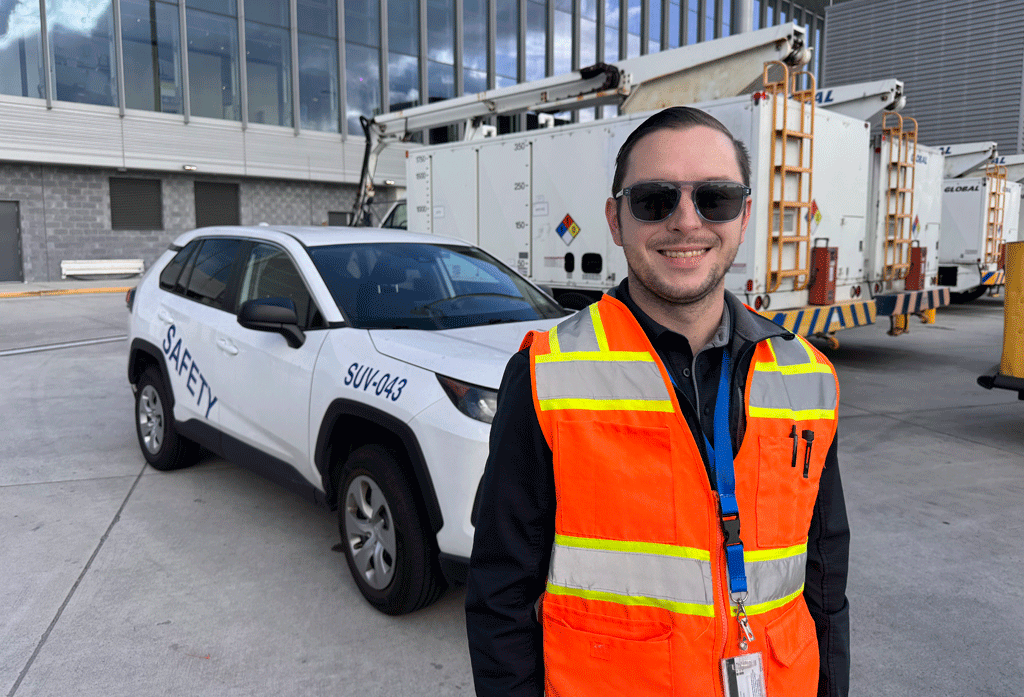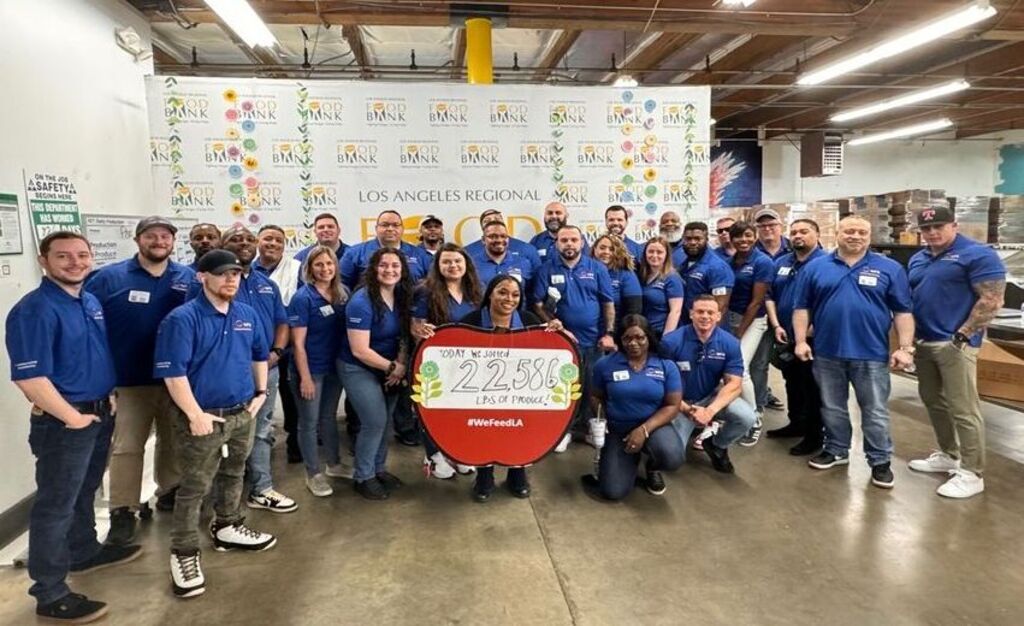Meet James, the Safety Manager making safety second nature at WFS
In the Americas, our Worldwide Flight Services (WFS) Team supports 106 locations, including 78 in the United States alone. From passenger handling to aircraft de-icing and ramp services, our ground operations are always active. But with so much happening, how do we make sure our operations and our people stay safe at all times?
At Newark Liberty International Airport (EWR), the weight of this responsibility rests on James’s shoulders.

James Regan, Safety Manager at WFS - Newark International Airport
Growing and advancing with WFS
James, Safety Manager at WFS, has always set his sights on pursuing a career in aviation, albeit not exactly on safety management.
He joined the team in 2021 as a Passenger Service Agent while completing his studies at the Aviation Institute of Maintenance (formerly the Teterboro School of Aeronautics) for an Airframe & Powerplant Licence. Just two weeks in, a manager spotted his potential and suggested a role in the Load Control Department.
As a Load Control Agent, and later Supervisor (he was promoted within a few months), James planned each outbound flight’s load and made sure the ramp team followed the correct loading instructions to maintain the weight and balance of the aircraft.
Read also: What I do as a Load Control Officer at SATS
His experience in load control introduced James to the importance of safety on the tarmac and became the foundation of his career in safety management. “I learnt so much about following protocols and keeping things steady,” he says.
In less than a year, James moved up to becoming a Safety Manager. “My scope got bigger—from managing five airlines to 23, and from leading a small team of six to overseeing the safety of over 900 employees,” he laughs. “But the focus hasn't changed: safeguarding every person and every flight.”
Navigating the complexities of airport safety
As Safety Manager, James wears many hats to ensure safe flights, operations, and staff at EWR. Each day, his tasks range from evaluating existing practices and assessing potential risks to implementing corrective actions that align with WFS standards, airline policies, and airport protocols.
For James, fostering a safety-first culture means being proactive. “Safety should not be something you address only when problems arise,” he says. Working closely with the local safety team in each station, James regularly conducts audits, keeping a sharp eye out for hazards and always preparing for emergencies. "In an airport environment, anything can happen, so maintaining our readiness is a priority,” he adds.
Read also: How SATS ensures safety is not just a word but a way of life
Becoming a Safety Manager, however, isn’t something one learns on the fly. Before stepping into this role, James underwent rigorous training, starting with hazard identification and management training from the now WFS VP of Safety. He gained hands-on experience conducting audits and inspections with the Health, Safety, Security, and Environment (HSSE) Team.
His educational background, focused on aviation safety and aircraft maintenance, along with his previous role in load control, also provided James with a solid understanding of the critical protocols on the tarmac.

James (leftmost) with other participants of the inaugural 15-week training at Leadership Academy
James is grateful to be part of an organisation committed to their people’s ongoing development. In March 2024, WFS partnered with Abilene Christian University to launch a Leadership Academy for their staff in North America, and James was one of the few selected to participate in its inaugural 15-week leadership training.
As part of the programme, he earned a Lean Six Sigma Yellow Belt, a credential focused on reducing waste and reducing variation in processes. "It’s a management approach that has helped me streamline our safety processes at EWR,” he explains, and he now applies those principles to guide his day-to-day responsibilities.
Balancing chaos with control

James's main responsibility is to ensure the safety of flights, operations, and staff members
What does James’s typical day as a Safety Manager look like? It begins with a review of the latest inspection data at WFS, identifying trends and opportunities to enhance safety. He then meets with the local team to share insights and outline steps for continuous improvement. Next, it’s time for a hands-on assessment. James walks the grounds, working closely with the Ramp Manager to tackle any identified hazards and ensure safety standards are upheld. James also checks in with customers to ensure their operations remain secure.
Read also: Cedric, a Ramp Specialist who believes safety is a habit
This structured approach keeps James’s day at work calm amidst the chaos of the airport environment. “By focusing on what’s controllable, we ensure standards are met even under pressure,” he notes.
One of the most persistent safety challenges on the tarmac is managing operational pressure. With on-time departures a priority for the carriers, the temptation to prioritise speed over protocols is always there. To address this, James makes sure agents feel empowered. By working closely with station leaders, he builds a culture where every team member feels supported to take control and create a workplace where safety is second nature. “We empower them through regular coaching, clearly communicating each person’s role in safety, and recognising positive safety practices within the team,” he explains.
Measuring success in safety
Success in safety management, for James, is twofold. On one level, it’s about meeting key performance indicators and maintaining a culture of accountability. Using the technological tools that WFS provides as a real-time tracking system, he can closely monitor safety performance across operations, ensuring that the numbers reflect a commitment to higher standards.
But for James, success ultimately boils down to something simpler. “For me, it’s making sure everyone gets home safe at the end of the day,” he says. “That’s the real measure of a job well done.”
James reminds us that while metrics are essential, safety is about people. His work goes beyond protocols and audits; it’s about building a culture where every team member feels responsible for each other’s well-being.

